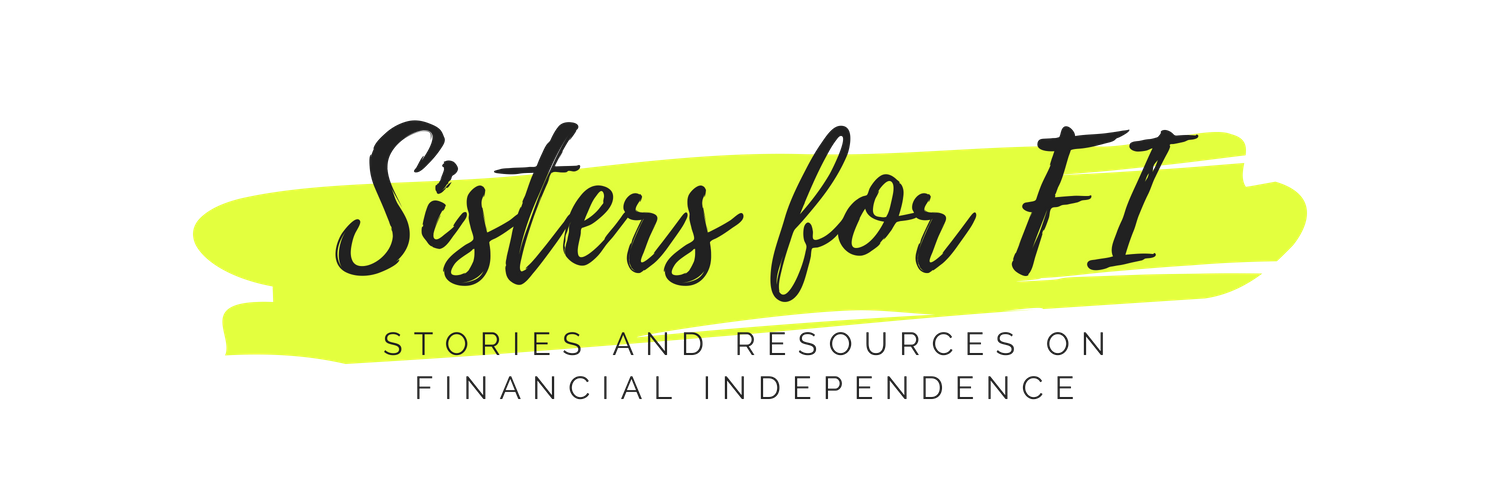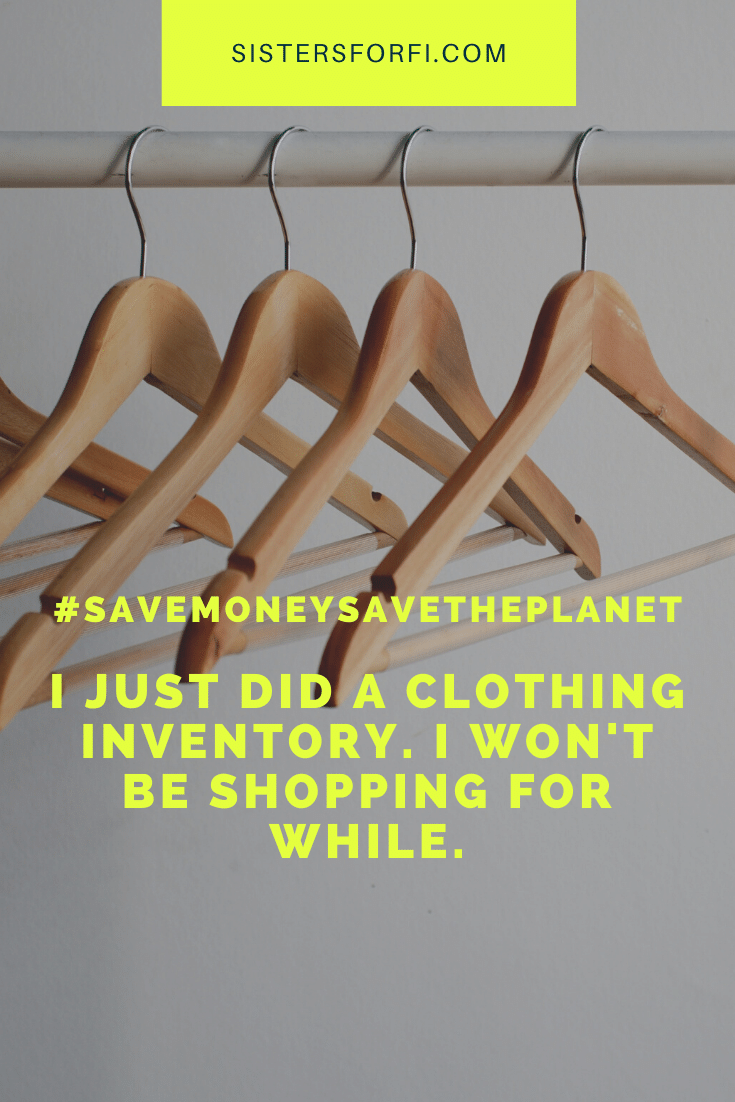I Just Did a Clothing Inventory. I Won't Be Shopping for While. #SaveMoneySaveThePlanet -
I’m finally satisfied with my outfit, as I scan myself in the mirror. I look over and there’s a new pile of clothes sitting on my bed, clothes strewn about on the floor, and hangers sticking out of my closet. It shouldn’t be this hard to pick an outfit, but alas, I find myself in this predicament often.
I like lists and I always have, so taking the time to create a closet inventory is pretty on brand for me. However, even if you’re not a list-aficionado like me, you can still greatly benefit from taking the time to perform a closet inventory and subsequent audit.
While browsing the depths of minimalism and closet organization, I came across Margaret, or @Mgetsdressed, who did a very in-depth overview of “Wardrobe Inventory and Outfit Logging Methods”. She goes into the different wardrobe logging methods, whether it’s digital or analog and the benefits of each methodology and is the basis of this article. Margaret goes well in-depth of the essence of the closet inventory itself, but I’ll be going into my personal experiences.
So...what’s a Closet Inventory?
How to Start Tracking Your Wardrobe
A closet or wardrobe inventory is a complete list of items or pieces in your closet. It involves compiling, identifying, and logging all your different articles of clothing. You can log your items with a good pen and paper, or you can make it digital. I opted to just make a spreadsheet, but there are apps you can use that can make it a much more visual process. Creating or conducting a closet inventory helps evaluate all your pieces and quantifies the depths of your closet. What you do with that information is up to you, but it can be a daunting process to get started.
Here’s a snippet of my tracking-of-choice. I found using Google Sheets to be the easiest method for me.
Why am I logging my closet?
To see what and how many pieces I currently have.
Why not make quantifiable data for myself? Rather than just staring at the abyss that is my closet, how many shirts do I actually own? Why do I have X amount of leggings? Why do I own so many pairs of X, when I don’t even like wearing them to begin with?
Reconsider how much money I’ve spent
Clothing comes at a cost and while I usually never spend regular retail prices on anything, all these sales add up quickly. It’s also interesting to see how my purchasing power has changed over the years. I used to treasure the twenty dollars I had at the mall and buy cheap Forever21 leggings and a floral graphic scoop neck from Hollister, as a preteen. Fast forward some 11-12 years years later and I’m a grown woman weighing in on what brands I should invest in.
Consolidate.
I want to consolidate, not only in items of clothing, but reorganizing and putting everything in its place. All my clothes happen to be in different locations, which makes outfit planning more difficult for me. Did I put that tank top with my casual tops in the drawer, the tank top in my sleep/work out drawer, the summer tops in my basket, or hanging under a cardigan on my clothing rack? Of course, I end up making a mess when I pick an outfit, so this is an opportunity to evaluate and organize..
What am I hoping to achieve after?
Better plan outfits for my day-to-day life, special occasions, and for packing
Donate and give my closet some room to breathe
Reach a new sense of organization
Identify pieces I’ve avoided because of issues: rips, tears, stains, doesn’t fit properly, etc
Fill in the gaps of pieces that I am missing and/or need replacing
I had to buy a separate clothing rack last year because my clothes wouldn’t fit in my closet. However, I did like that I could visibly see the clothes I was regularly wearing.
How much time are you willing to invest up front?
I knew from the start that this wasn’t going to be a quick weekend project. It was going to take time, not only because I’m a huge procrastinator, but simply because I don’t even know where all my clothes are. Surely I was going to stumble upon a lost shirt or swap between cold weather clothes to summer ones and realize I had many more pieces to account for. This has certainly become a much longer process spanning a few months, but I have definitely accounted for most of my closet.
Is collecting metrics important to you? What kinds of metrics?
For me, I wanted to know the different kinds of clothes I was wearing and how many of each I had. I’m a huge cardigan person, for example, so that was its own category. I also included the clothing’s size, as a means to better understand a sizing average despite sizing discrepancies and vanity sizing running rampant in the fashion industry.
My Personal Takeaways & Results
This process took a much longer time than expected. I’m not surprised considering I didn’t dedicate one weekend or week to do this, but it definitely took some willpower to finally dig out the clothes I had forgotten or weren’t a priority. I used to not be the type of person where my wardrobe varied vastly, but I have accumulated many articles of clothing of the years — each piece reflecting my fashion mindset at the time. I’m 25 now, but I still have a few tops from high school. I have “going out” clothes and miscellaneous sorority and college-branded clothes from university. I have my pre-covid 9-5 office day job clothes, my casual day-to-day outfits for WFH, and more.
Doing a closet inventory reinforced the idea that I want a bigger closet. Not necessarily for more clothes, but just so I can display everything at once. I currently have a small bedroom and minimal storage in the apartment, so I have a few miscellaneous storage bins that are taking up valuable real estate in my closet. I hope I can have a larger or wider, or at least more visible closet so I can see certain categories at once. Having all my clothes in separate places -- tucked away in drawers, bins, and in piles -- makes decision making much harder.
Some other brief takeaways include:
Why do I have so many cardigans!?
I didn’t realize I owned so many shoes!!!
I still have shoes from when I was 16.
I’m surprised by the couple of shirts that survived since high school.
There’s almost little evidence of my Forever 21 days.
I went from wearing a lot of black clothes to beiges/creams.
I knew I had a lot of clothes, but this was an embarrassingly, rude awakening for myself and my wallet. I can’t imagine how much money I’ve spent over the years. It’s hard to estimate how much money I’ve spent in total, since I love getting a good, cheap deal, but now I have more money and am willing to pay more for items. It wasn’t until recent years that I would willingly pay more than $20 for an article of clothing. Even if I crudely round every item to $20, my wardrobe would cost me over $3,660. That’s a lot of money that could have been used for other things.
Going forward, I hope that acknowledging and analyzing my closet allows me to make better decisions regarding my current wardrobe. My next move is to finally get rid of the clothes I genuinely don’t wear and cut down on some of my iffy items. 183 items is also a conservative number because it doesn’t account for all of my sleep, workout clothes, and undergarments. Oops! By downsizing my closet, by even just a little bit, I help to alleviate the headache that is outfit picking, as well as the damage control of the subsequent clothing tornado that occurs. Having a lot of clothes isn’t just a burden to my wallet, but takes up time and space. I surely would have saved a lot of time if I didn’t have to worry about creating the perfect outfit. Sometimes having too many choices makes decision-making that much more difficult.
It’s time to be more honest with myself, I probably don’t need to go shopping for awhile.
#SaveMoneySaveThePlanet - I Just Did a Clothing Inventory. I Won't Be Shopping for While.









